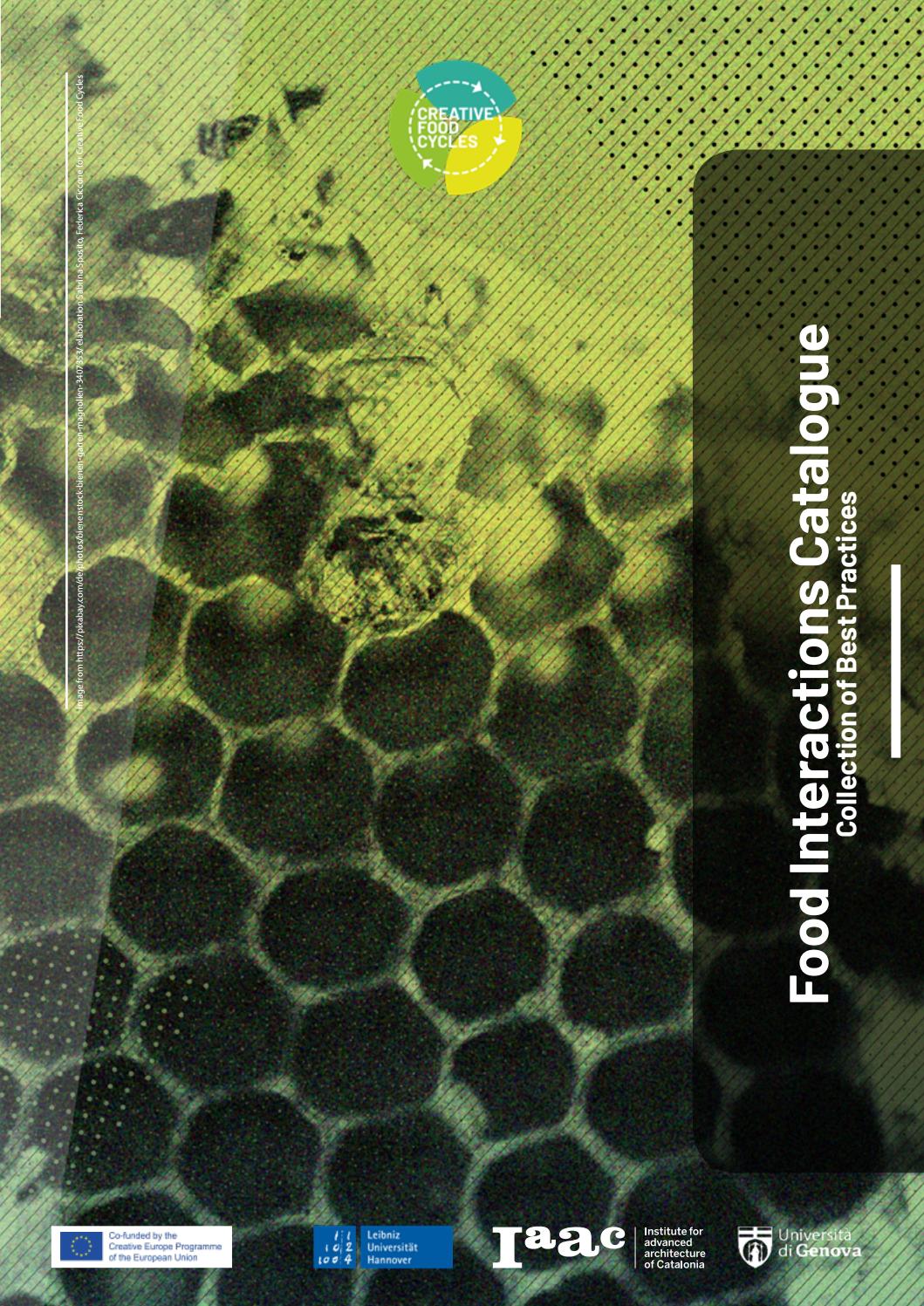COLLECTION OF BEST PRACTICES
The change of paradigm regarding food as urban element is provoking major innovations in the concepts and modes of food culture and economy, of everyday urban practices, and it is also strongly affecting our vision of urban futures.
By answering to an international Call for Projects a collection of more than 30 creative examples —realised and implemented— are targeting innovations in the topic of food, not only as cross-cutting factor, but as accelerator of desired urban change, according to the following challenges:
How can we create new conviviality through FOOD CYCLES?
How can we scale-up FOOD CYCLES as models of co-design?
How can FOOD CYCLES enhance the transformation of cities?

The Food Interactions Catalogue is divided into three sections, each one corresponding to one phase of the food cycles:
Phase 1 | Production to distribution (IAAC)
Considering the growing interest and demand for food-security, food-safety and advanced farming practices in cities, this section aims to provide the reader with examples of projects working at the intersection of digital technologies, bio-technologies and ICT solutions combined with responsive food production.
Phase 2 | Distribution to consumption (LUH)
Considering the necessity of actions to face future territorial and societal challenges for the development of resilient food systems, this section explores new models of distributing, marketing, processing, and consuming —as well as cooking, displaying, sharing— into collective aggregation points to foster the fair access to regional supply chains and sustainable foodsheds.
Phase 3 | Consumption to disposition (UNIGE)
Considering the food waste as resource which opens up to wide range of opportunities, experimentations and new aesthetic dimensions, this section introduces the reader to creative ways of recycling and reusing food for prototyping new compostable materials, ecological products and social processes, by promoting sustainable, users-centered design and circular economy.
Each project is read according to different indicators referring to three types of classification: Typological Categories, Readiness Categories and Performance Categories. By guiding the reader to assume a proactive attitude regarding food and its expressive capacity, as a cultural vehicle of identity, innovation and social integration, a series of essays introduce the exploration of the projects.
The Food Interactions Catalogue is available as an ISBN Open-access Digital publication:
Food Interactions Catalogue – Collection of Best Practices is a publication of Creative Food Cycles, a project co-funded by The Creative Europe Programme of the European Union edited by: IAAC _ Institut d’Arquitectura Avancada de Catalunya, Barcelona, LUH _ Chair of Regional Building and Urban Planning, Hannover, UNIGE _ DAD, Department of Architecture and Design, Genova. More info at https://creativefoodcycles.org

